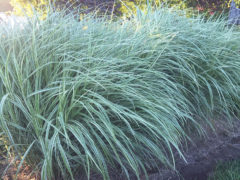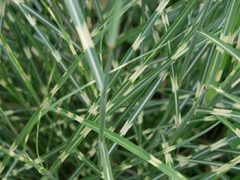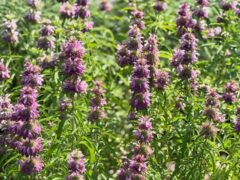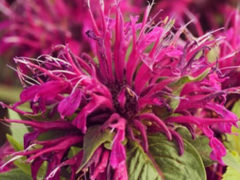
‘Adagio’ dwarf maiden grass
Miscanthus sinensis 'Adagio'
Silver gray narrow foliage to 3-4′ tall with a 3-4′ spread. Pink inflorescence appear in … Continued
Drought-tolerant and drought-resistant plants may still need supplemental water from time to time, but they can survive periods of dryness without dying.
Drought-resistant plants like cactus, hens and chicks, and sedums can go for very long periods without water and do not tolerate poorly drained locations. Drought-resistant tropical plants grown indoors in winter like cactus, Sansevieria, Echeveria, and other succulents sometimes fail due to overwatering.
Drought-tolerant plants grow in many textures and sizes and have different adaptations that help them get through periods of drought:
The latter two types of plants are drought tolerant once established because any new planting, regardless of drought tolerance, needs to be watered during the first growing season to allow roots to reach the depths needed to access moisture during dry periods.
It’s also important to note that survival may not mean that the plant will look its best during this time. Watering weekly for a longer period of time will result in the best-looking gardens with the highest tolerance for drought. During the hottest, dryest times in summer, watering deeply twice a week is recommended. These less frequent waterings will encourage root systems to expand, making it easier for plants to access moisture when their environment is dry.
Winter drought has become a bigger problem in recent years as snowfall declines. Evergreen plants are especially vulnerable during winter drought because their foliage continues to shed moisture while dormant deciduous plants have shed their leaves and can conserve moisture in woody stems and underground. Watering shrubs and trees in winter on days when the temperature allows (above freezing) will help ensure their healthy return in spring.
Here are some drought-tolerant and drought-resistant plants to grow—

Miscanthus sinensis 'Adagio'
Silver gray narrow foliage to 3-4′ tall with a 3-4′ spread. Pink inflorescence appear in … Continued

Miscanthus sinensis 'Little Zebra'
‘Little Zebra’ is shorter and more upright than ‘Zebrinus’ but retains the distinctive gold banding. … Continued

Miscanthus sinensis 'Morning Light'
Feathery, fan-shaped, pale pink panicles. Neat narrow-leaved upright grass arches outward at the top in … Continued

Miscanthus sinensis 'Dixieland'
Also called Japanese silver grass, this ornamental grows 4-5′ tall with wide leaves that are … Continued

Miscanthus sinensis 'Zebrinus'
Horizontal yellow bands on wide foliage that grows 4-6′ tall and 3-5′ wide. Tolerates poorly … Continued

Monarda punctata
Prefers sandy soils and full to part sun. It has an exotic flower form and … Continued

Monarda bradburiana
Grow in dry to medium moisture in well-drained soils in full sun to part shade. … Continued

Monarda 'Buzz Cherry Pops'
In midsummer, ‘Cherry Pops’ forms a solid dome of cherry red, 2-2½” flowers on strong, … Continued

Monarda citriodora 'Lambada'
Horsemint foliage has a strong citrus scent when rubbed or crushed. It is very easy … Continued

Monarda didyma
Monarda didyma ‘Balmy Pink’ is a dwarf plant covered in lavender-rose blooms in summer. ‘Balmy Purple’ sports … Continued

Monarda didyma ‘Gardenview Scarlet’
Large red flowers in June through August on mildew-resistant foliage growing 4-5′ tall. Heat and … Continued

Monarda fistulosa
Violet blossoms with aromatic foliage. A familiar sight on the prairie. Native to most of … Continued